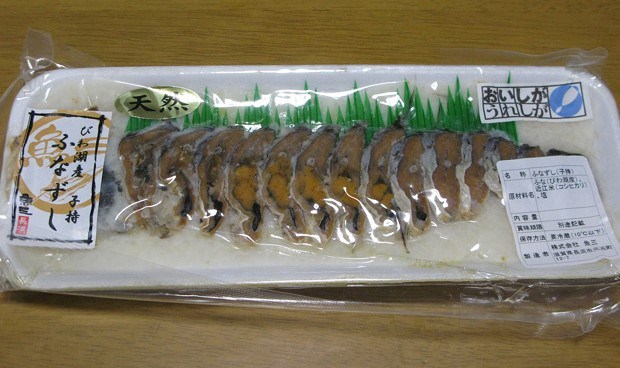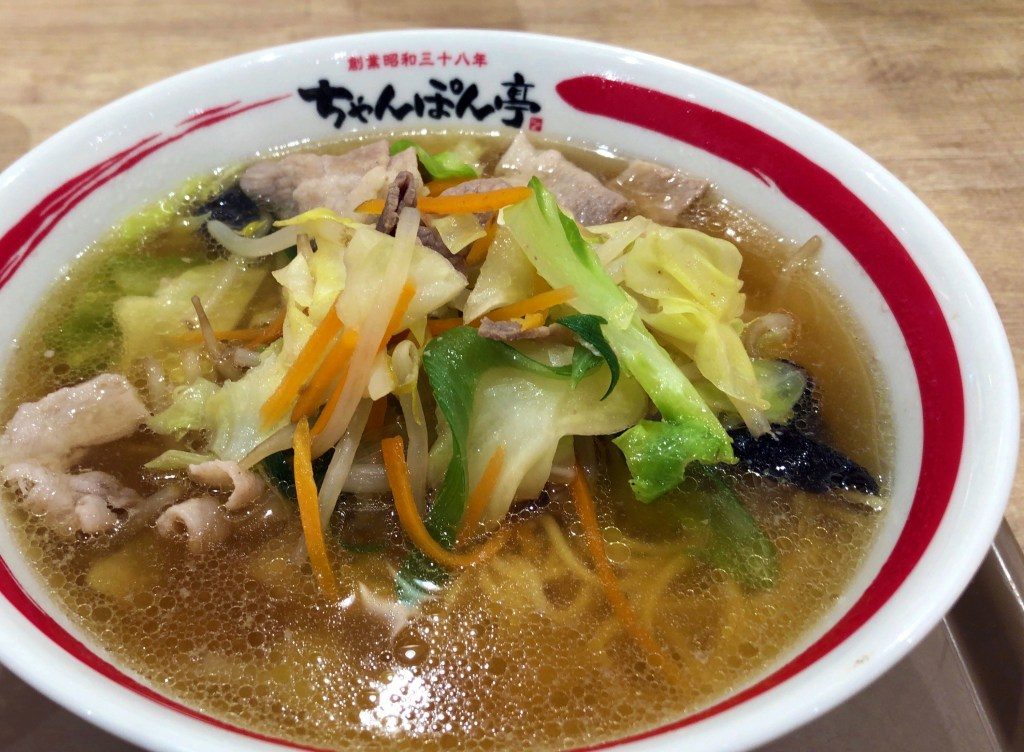Every place has a food that it’s known for. Michigan, for example, has Mackinac Island fudge, Traverse City cherries, and Upper Peninsula pasties. But what about Shiga?
Of course, sushi, ramen, and tempura come to mind when thinking of Japan, but each prefecture has its own meibutsu (名物; famous product, typically food). Thanks to the lake and its rich history, Shiga is full of tasty meibutsu for you to try next time you’re visiting!
Ōmi Beef
You’ve probably heard of Kōbe beef, the famously delicious beef from the Japanese Black Cattle in Hyōgo. But did you know it’s only one part of three famous Japanese beefs, all from the Kansai region? The 三大和牛 (sandai-wagyū; the three big beefs) also includes Matsusaka Beef (松阪牛; matsusaka-ushi) from Mie and Ōmi beef (近江ビーフ, ōmi-biifu) from Shiga!

Ōmi Province (近江国; ōmi no kuni), or just Ōmi, is the old name for Shiga Prefecture, and this is where the name of the beef originated. With over 400 years of history, it is said that Ōmi beef is the oldest of the three big beefs, and was presented as gifts to the daimyō and shōgun. Ōmi beef is known for its marbled fat that melts in your mouth without leaving an oily feeling. Restaurants all over Hikone and Shiga sell Ōmi beef, so be sure to try it at least once!
Funazushi
Narezushi (馴れ寿司) is the granddad of modern sushi, and looks nothing like what we call sushi today. Hundreds of years ago, narezushi was a great way to preserve fish and an important part of the diet of people who lived around Lake Biwa. The fish is preserved in salt then covered in rice and left to ferment for months or even years. People would typically throw out the rice and only eat the fish, but eventually people started eating the rice too, which gave way for nigiri-zushi we know and love today. Most people stopped eating narezushi long ago, but you can still find a type of narezushi, funazushi (鮒寿司), in one prefecture of Japan: Shiga.

Funazushi is typically made with nigoro-buna (煮頃鮒 / ニゴロブナ), a type of fish that can only be found in Lake Biwa. It’s certainly an acquired taste, even for people who’ve grown up in Shiga, because of its strong cheesy smell and creamy texture. However, people who like funazushi really like funazushi. It can be found everywhere in Shiga, from traditional restaurants to supermarkets. It is usually enjoyed with rice or ochazuke (お茶漬け; “submerged in tea”), a savory rice dish with tea poured over it, and it goes great with sake. If you have the opportunity and are feeling up to the challenge, try some funazushi while in Shiga!
Kamonabe
Thanks to the lake, fish dishes are very popular in Shiga. There are about 60 types of fish that can only be found in Lake Biwa (such as nigoro-buna and the Biwa salmon), with another 1000 types of fish living there too. You can find all kinds of fish dishes in Shiga, including sōmen (素麺; a type of thin wheat noodle) with grilled mackerel and eel hot pot. The lake is important for migrant birds from Russia in the winter, so dishes like kamonabe, hot pot (nabe) with duck (kamo) are common.

The duck is lean and slightly sweet compared to chicken. It’s illegal to hunt for birds near the lake, but legally made kamonabe is a nice way to warm up in the winter.
Champon-tei
There are plenty of other foods that Shiga is known for, like Omihachiman’s red konnyaku (赤こんにゃく), a bright red version of the (often grey) firm jelly found in various dishes, and Nagahama’s noppei-udon (のっぺいうどん), a noodle dish with very thick, almost syrupy soup. The list is endless! But of course, there are also restaurants that call Shiga home; one of the most famous is a ramen stop called Champon-tei (ちゃんぽん亭).

Champon-tei (stylized as CHANPONTEI) first opened up as a noodle restaurant in Hikone. As they grew in popularity, they began opening more restaurants in Hikone and the rest of Shiga. Hungry business men said that their ramen was the best, and, with that in mind, Champon-tei came up with their signature dish, Ōmi-champon (近江ちゃんぽん), known as “Shiga’s soul food”. Champon-tei’s ramen is unique; they cook the noodles in the soup broth (traditionally, the noodles are cooked separate and placed in the soup), and they recommend mixing some vinegar in the ramen after eating some for a refreshing new taste.
There are now Champon-tei restaurants in nearby prefectures outside of Shiga, and there’s even one in Hawaii! Luckily for JCMU students, there is a Champon-tei just down the street from campus, a little past 7-11. If you stop by for a quick and cheap bite, be sure to try their karaage (唐揚げ; fried chicken) too!
Food is a huge part of culture, so learning about (and tasting) what is eaten in Shiga will help you understand the locals even more. Enjoy your Shiga food adventures!
